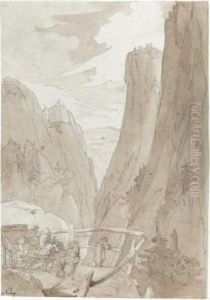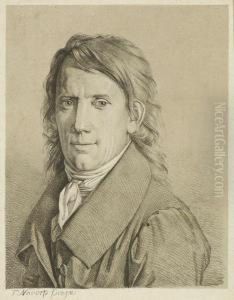Franz Joh. Heinr. Nadorp Paintings
Franz Johann Heinrich Nadorp, also known as Franz Nadorp, was a German painter and engraver born on January 24, 1794, in Münster, Germany. He was a part of the Romantic movement, a period that emphasized emotion and individualism as well as glorification of the past and nature. Nadorp's work often reflected these themes, with a particular focus on landscapes, historical scenes, and genre paintings that captured the customs and spirit of his time.
Nadorp initially trained under the guidance of Clemens August Street, a court painter in Münster. In pursuit of further artistic development, he moved to Düsseldorf in 1813, where he studied at the famous Düsseldorf Academy, an institution known for its role in shaping the Düsseldorf school of painting. It was here that he was influenced by the teachings of Peter von Cornelius and Wilhelm Schadow, both prominent figures in the German Romantic movement.
Throughout his career, Nadorp traveled extensively, which significantly influenced his artistic style. He spent time in Italy, where the Renaissance masters and the Italian landscape left a lasting impression on his work. Nadorp's paintings from this period often exhibit a warm palette and attention to the effects of light, characteristic of the Italian influence.
Nadorp was also known for his engravings, which demonstrate his skills in a different medium. These works were marked by their fine detail and clarity, showcasing his ability to capture complex scenes and subjects in a smaller format.
Franz Nadorp's contributions to the art world during the 19th century were substantial, and he enjoyed a measure of success and recognition in his time. His works were exhibited in various German cities and influenced contemporary Romantic artists. He passed away on August 27, 1876, in Rome, Italy. Today, his works can be found in several collections and are studied for their representation of Romantic ideals and their depiction of early 19th-century European society.

